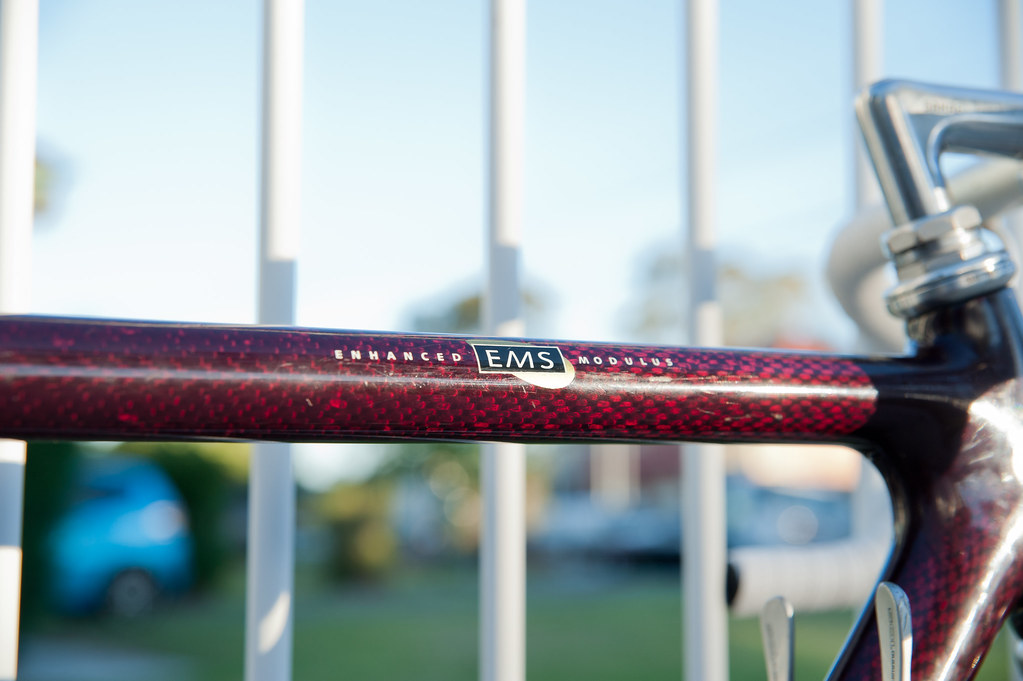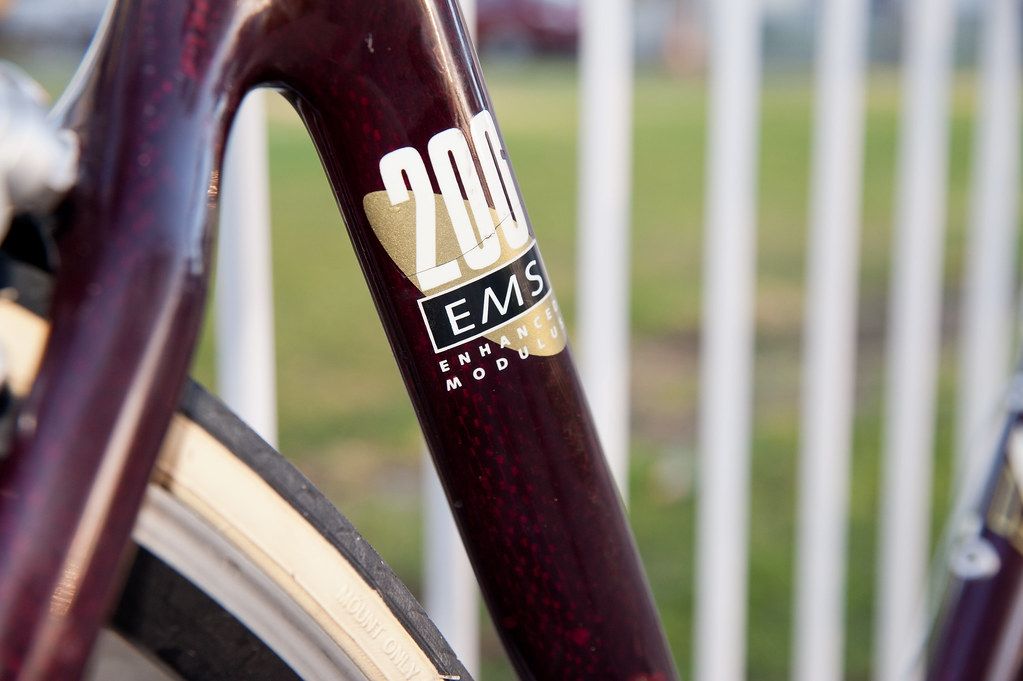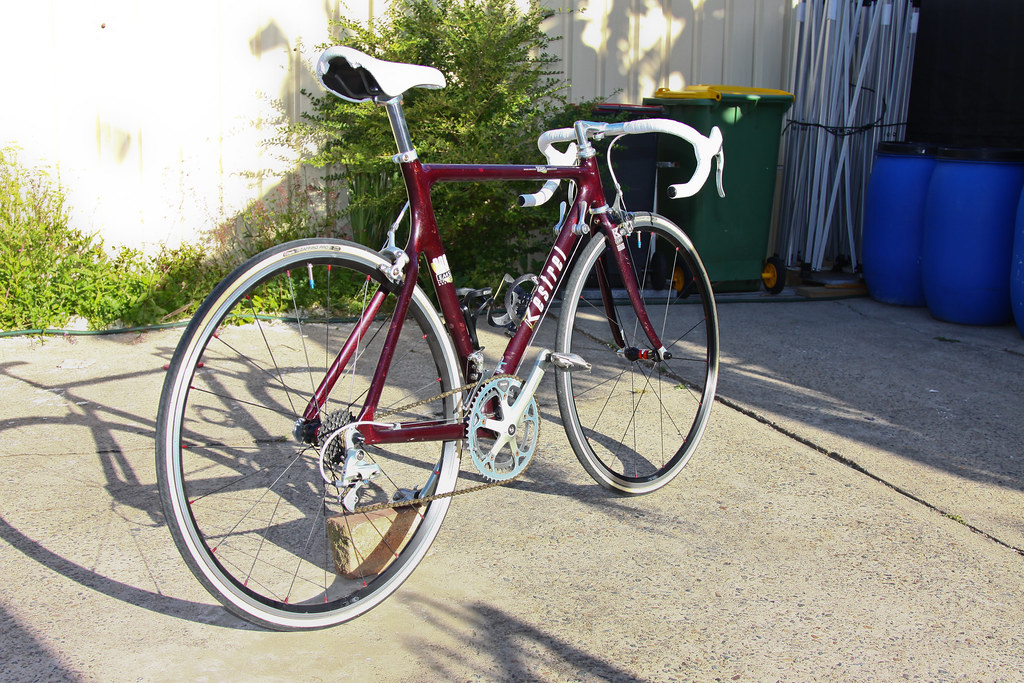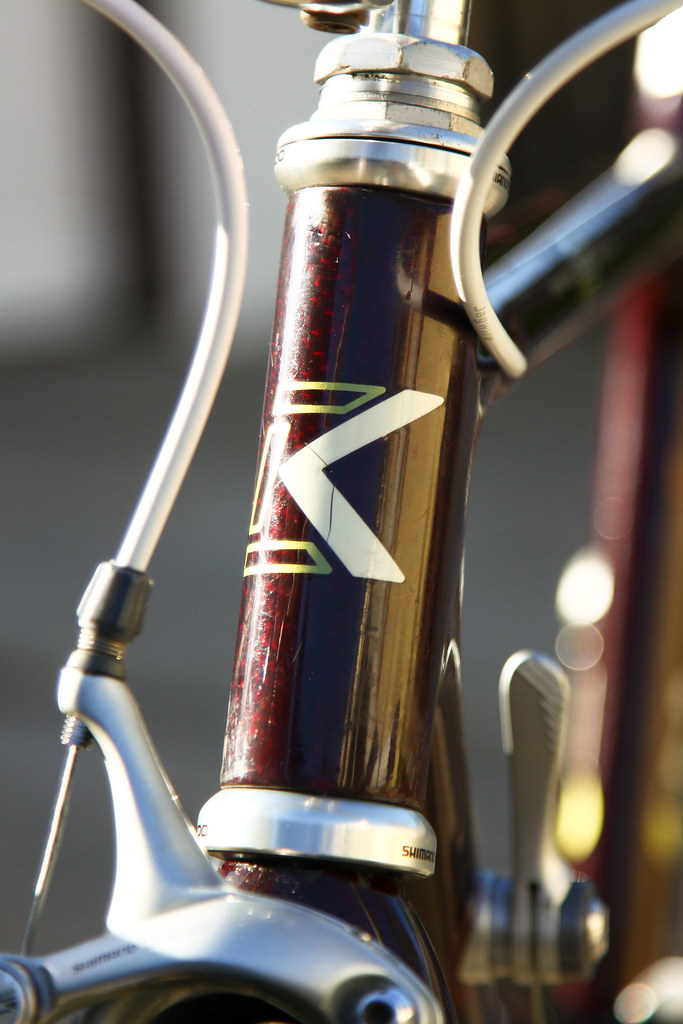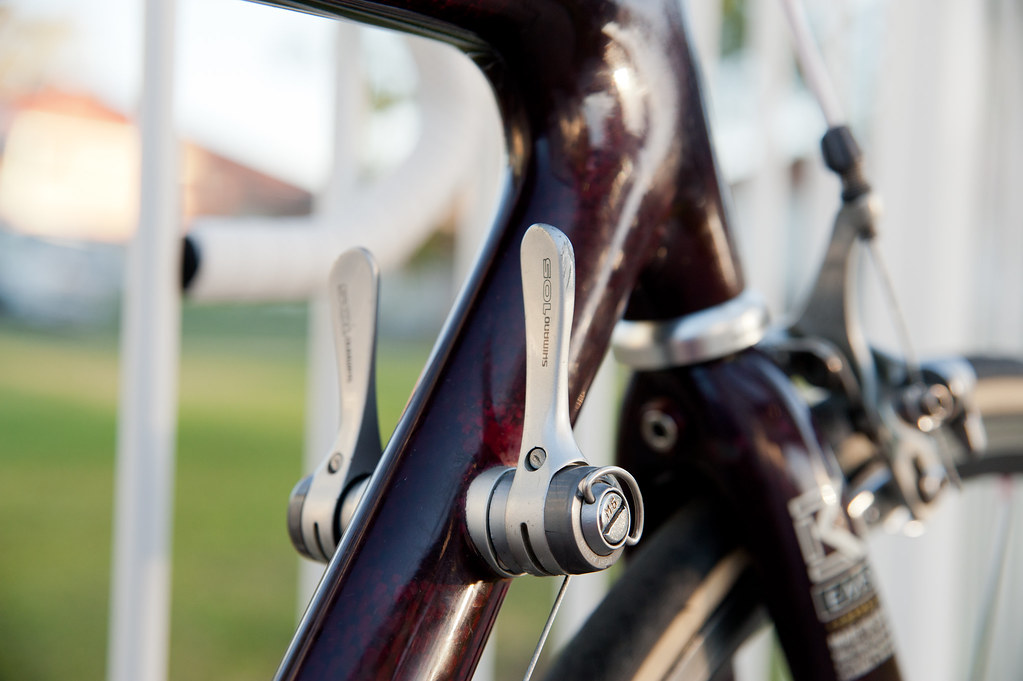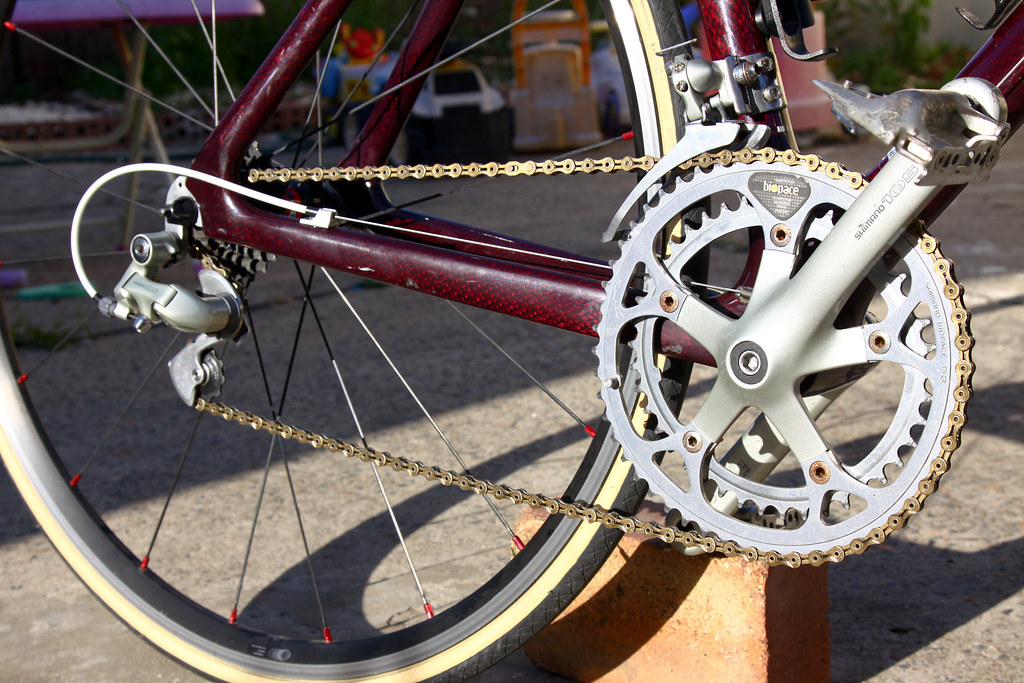Tue Dec 10, 2013
In the earlier hours before my accident, where I destroyed my Gios, I brought home a Kestrel 200 EMS frame. I was directed to the eBay listing by one of the Sydney retro riders, and decided to get it as it was relatively cheap. Little did I know I would be building it up right away.
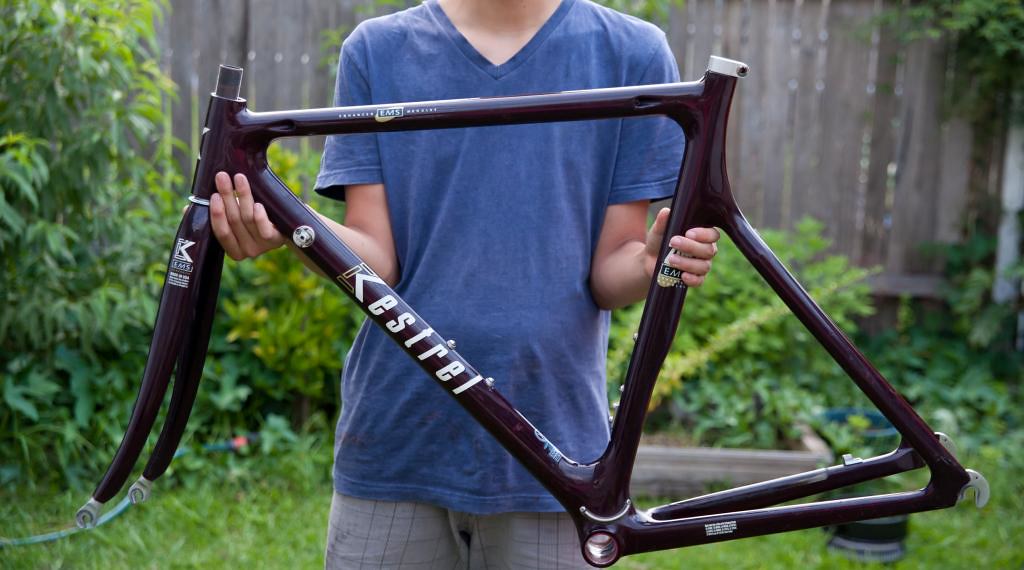
Now, from what I can tell, I believe this is a 1999 model. I found that the Ruby Weave colour and original EMS fork (allegedly with a titanium steerer) was released that year as per the brochure. The 200 model should be the second model Kestrel made, after the 4000 in 1987, with my frame being made in the last years of production. The frame weighs 1225g, and fork 500g, making it the lightest frameset I own. Built up with the 105SC group from my Gios, it ends up being a 9.1kg bike. This is what I got done today. I have a carbon post which will go on, and will need to route the rear brake housing through the top tube which will take a while tomorrow. 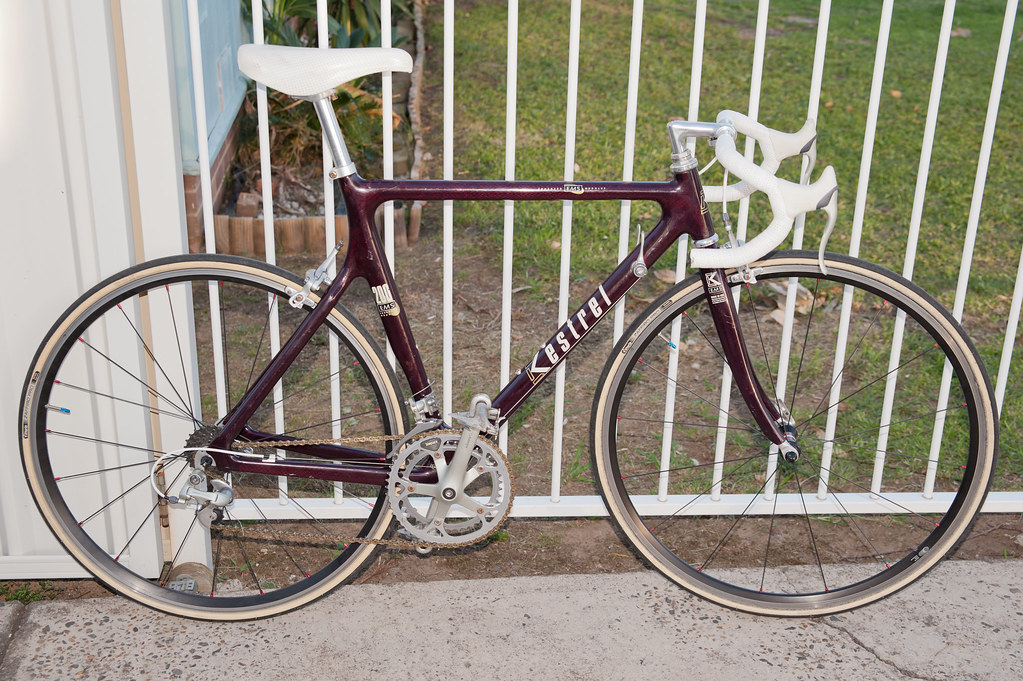
The deep ruby colour is lovely. The gumwall and white touches surprising match well.
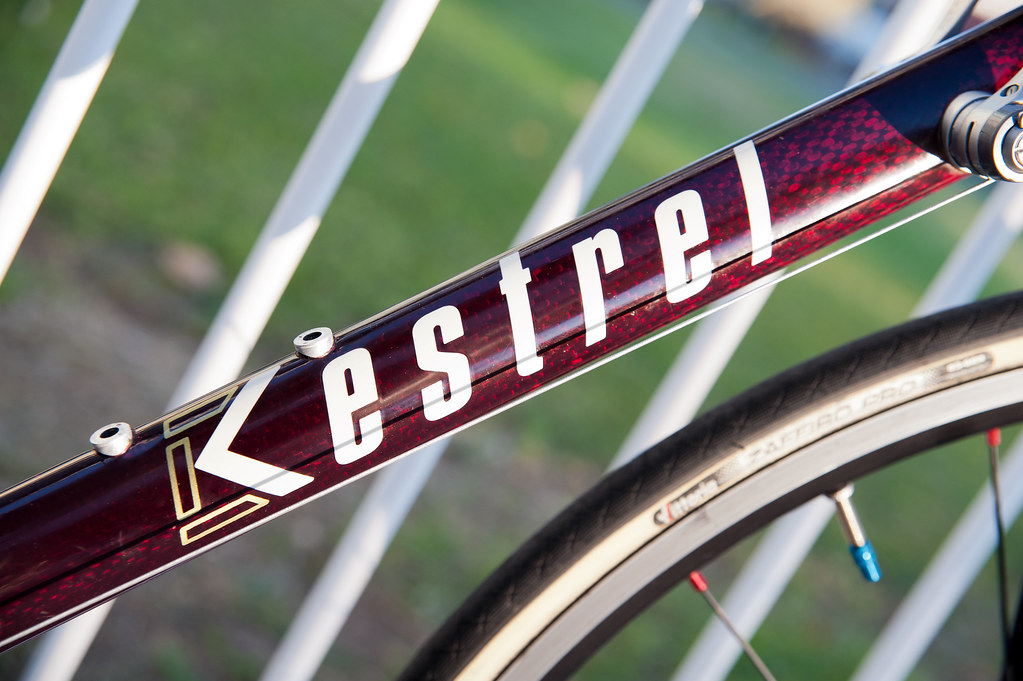
Thu Dec 12, 2013
Fully done now. The torn Turbo replica saddle was replaced, and a braze on FD was used. The rest came straight off the Gios. The bottle cages are only temporary. I will need to wait on some silver or white cages. 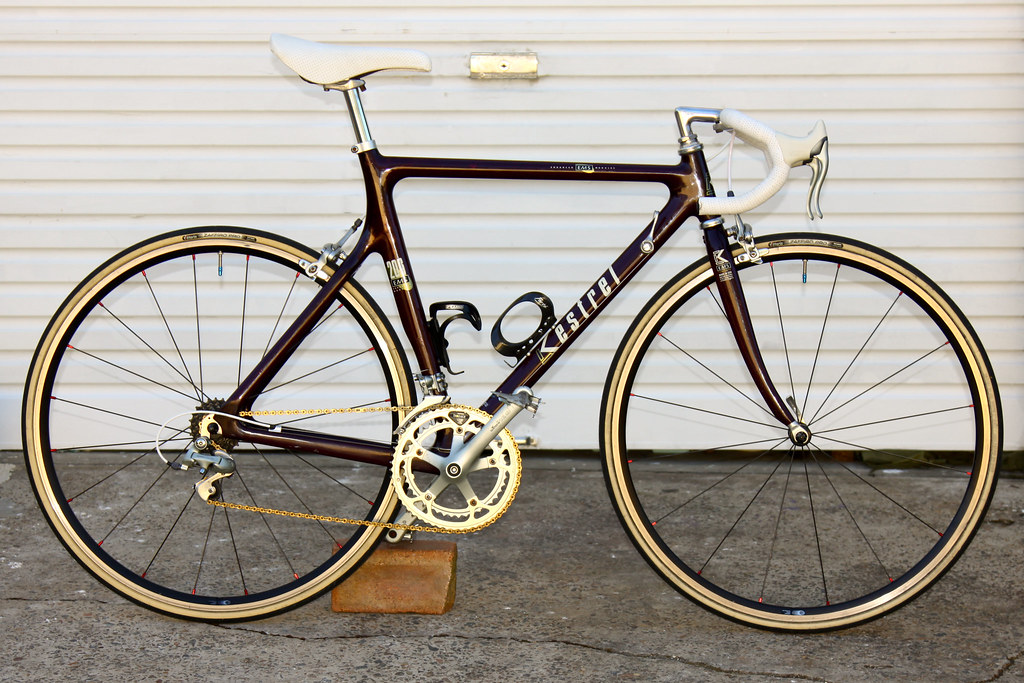
The clear ruby colour shows up well in sunlight.
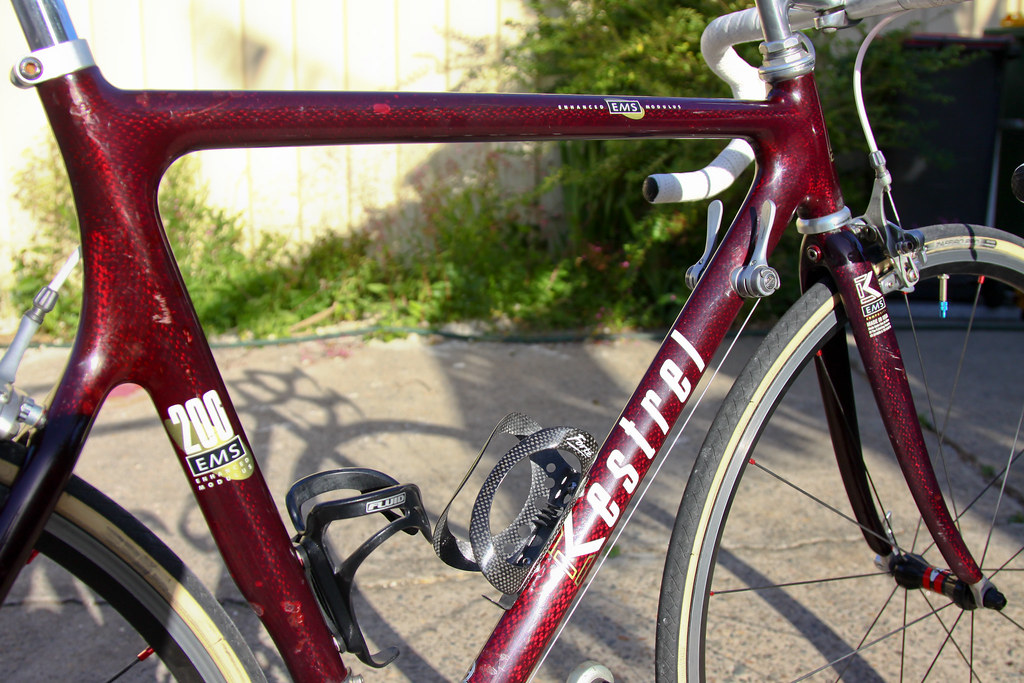
The frame came from Santa Barbara Bikesmiths over in California. The Castle Hill owner before me bought it off some dude from Brisbane, and that’s all I know where the frame came from. 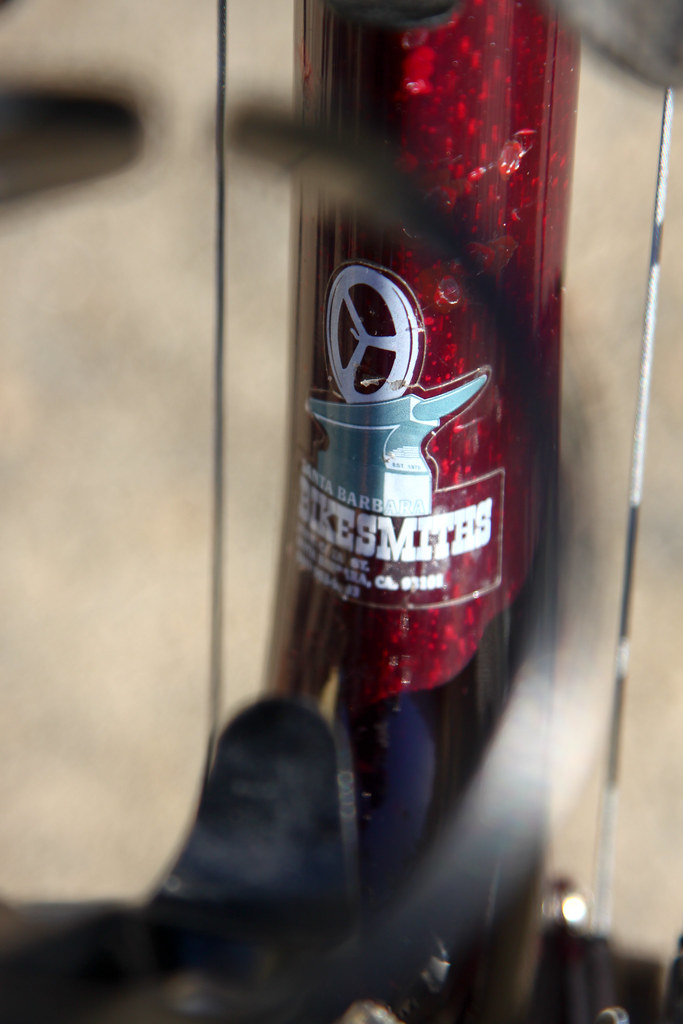
As for the seatpost issue I had, I found the reason behind it. The seat tube is made of carbon and there is an aluminum sleeve inserted into the top, which is used to clamp the seatpost. There is a cavity in the seat tube below the sleeve with a slightly larger diameter than 27.2, which allows for minor movement of the seatpost when subjected to forces when the bike is ridden. Over time, this movement can cause cracks at the top of the seat tube. If the seatpost is too short, and the bike tips over, this leverage can easily crack both the seat tube carbon at the top, and the aluminum sleeve inside. Cutting the seatpost to exact length eliminates most of this movement, and helps to avoid the cracking of the top of the carbon tube, and more importantly, the cracking of the aluminum sleeve. Guess this is something Kestrel didn’t take into account, even though hey went to the lengths of wind tunnel testing for aerodynamics(first company to do so for a production frame), and FEA testing. This is why I am using the aluminium one, as opposed to cutting my carbon post.
